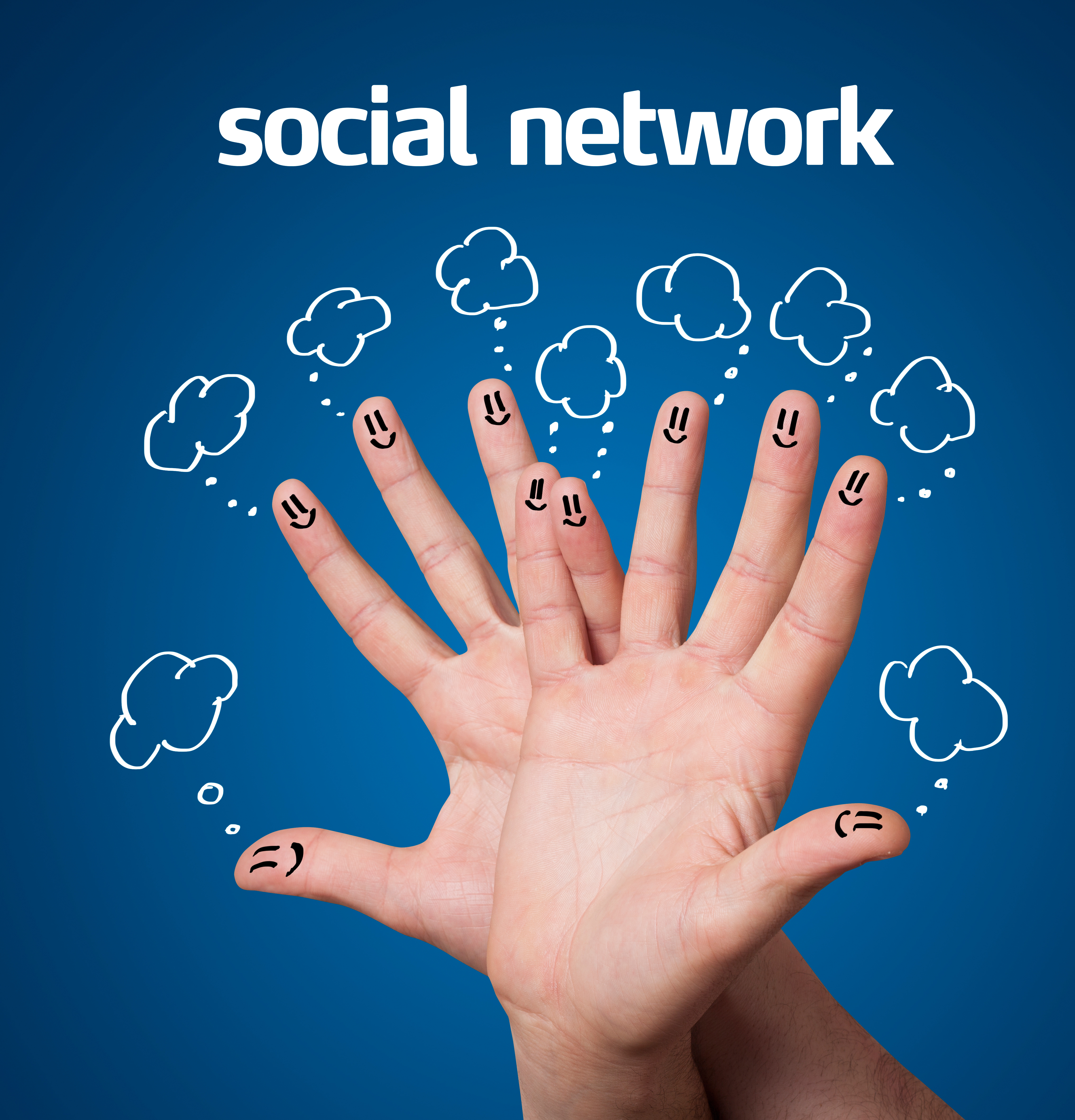
We only get one chance to make a first impression. This article explores how interpreter’s attire choices are more than just a reflection of themselves, and provides one question every interpreter should ask before stepping out the door.
Do you mind your ABCs (Appearance, Behavior, and Communication) as you prepare for every assignment? Can you think of an interpreter who has professionally mastered her or his ABCs and the impact that mastery has had on the Deaf community members with whom that interpreter has worked? What about an interpreter who exhibits what are referred to as Toxic Traits?1 These may include a “way of being” that drains the energy in the room, dandruff, bad breath or body odor, hair dyed unnatural colors, cleaning teeth or biting nails in public, entering a room with more bags than your local grocer, loud makeup, dangling or sparkly accessories, wrinkled clothing, bright nails or French manicures, worn out shoes, and/or an appearance that is inappropriate for the given environment. Dare we say that every practitioner out there has a Toxic Trait story to recall? This begs the question: did you say something to the Toxic Trait offender?
We have been conditioned over the years to believe that someone else will handle it: our team will tell us if we cross the line ethically, Deaf people will tell us if they don’t like our clothing or accessories, and RID will manage ethics and punitive measures. Someone else will tell me if my appearance disempowers the Deaf person(s) in the room. What if you’re that “someone else”? Consider this a call to action, to collectively shift our culture to one of appearance accountability: both for ourselves and for one another.
The impetus for this article comes from nationwide conversations with consumers and colleagues. In 2012, we gave a presentation to 70+ ASL interpreters, designed in response to the trend of interpreters’ appearance and attire selections reflecting poorly upon the Deaf community. We believe this topic isn’t being taken seriously enough given the consequences it carries. Our hope is that by the end of this article, you’ll understand how the inappropriate appearance choices of sign language interpreters serve to further oppress Deaf people, potentially limiting their workforce participation and mobility.
Why First Impressions Are So Important
It’s no secret that outside of our community, the field of sign language interpreting is not yet fully accepted as a legitimate profession. We struggle for consistency and predictability in our national testing system, our business practices vary from one practitioner to the next, our ethical code prescribes behaviors instead of enumerating bedrock principles, etc. How many times have you been asked whether or not you’re the Deaf patient/candidate/employee’s relative? Like it or not, the non-deaf majority sees us more as an extension of Deaf people than as professionals performing a cognitively complex task.
When we presented in 2012, we sought testimonials and perspectives from Deaf consumers and our colleagues to share. We find what Dennis Cokely had to offer particularly poignant:
“It is certainly undeniable that society in general has become much more casual in dress and “casual Fridays” have, like a virus, crept into the rest of the work week. I think this has given many interpreters “permission” to dress and act much more casually than I think they should. … The fact of the matter is that interpreters are definitely seen by society at large as aligned with Deaf people and present to help Deaf people; this despite our assertions that we are “neutral” and are there to serve both parties. Society in general certainly believes that it is Deaf people who need interpreters, not the hearing bankers, lawyers, doctors, sales clerks, teachers, counselors and wait staff Deaf people are interacting with. Society in general judges Deaf people by the company they keep – and that company is US!!!!”
In 2012, Anna Witter-Merithew shared this perspective in a StreetLeverage.com post (note Anna’s comment on January 18, 2012 at 12:16am): “How we dress does impact on how we are perceived AND how deaf people are perceived. …Dressing according to the system norms is one way to improve how we are perceived in that system.”2 It is fair to say, from Anna and Dennis’ thoughts, from empirical research about impressions, and from our collective observations, that our appearance and behavioral decisions reflect upon Deaf people, for better or worse.
Research tells us that “others immediately form stereotypical associations about you that are frequently emotionally based, and that once those impressions are formed, others’ rational and emotional brains seek to validate those impressions.”3 Studies show that you have as few as six seconds4 when you meet someone to create a lasting impression. This impression will impact their relationship with you and, more importantly, with the Deaf individual for whose interview/appointment/etc. you’re booked to interpret. “After the fact, it’s easy for someone to tell whether you are a rarity who actually tends to every detail. But before you get the opportunity to prove yourself, people will have to draw that conclusion from the way you look, [communicate], and act. If your hair isn’t combed, your clothes aren’t neat, your shoes aren’t shined and you don’t [communicate] in a logical and orderly fashion, why should they assume your work will reflect any greater care?”5 If they are making these judgments about our work, and our work is Deaf people’s lives, then what reflection does that cast and what’s the ripple effect?
Judging a Book By its Cover
There are countless studies done by business, law, and medical schools across the country about the impact of attire on the customer, client, and patient’s perception of the respective professional’s expertise. In one healthcare study, respondents were shown to overwhelmingly favor physicians in professional attire with a white coat. Wearing professional dress while providing patient care by physicians may favorably influence trust and confidence-building in the medical encounter.6 In the legal field, the impact of appearance has long been taken seriously and there are consequences when one fails to satisfy the expectation. “Certainly by becoming a member of the bar, a lawyer does not terminate his membership in the human race, nor does he surrender constitutional rights possessed by private citizens. … However ‘[membership] in the bar is a privilege burdened with conditions.’”7 We believe that the nature of our work and invitation into the lives of Deaf people is also a privilege burdened with conditions, including that of adjusting one’s appearance to suit the environment.
We are not suggesting sign language interpreters wear physicians’ white coats to their assignments in healthcare. What we are suggesting is that working in the interpreting profession, your casual attire may not impact your future success. Instead, it is more likely that it would impact opportunities for success for the Deaf people with whom we work. When we’re invited into the lives of Deaf people, we are guests and we should treat those experiences as such. To dress down as a default undermines the very respect we purport to uphold.
So What? Why This Matters
When was the last time your attire choices could have impacted whether or not the Deaf candidate got the job? Will you ever know for sure? Has your desire to express your personality ever overshadowed the Deaf researcher’s presentation to her or his non-deaf colleagues? How do you know if the way you entered the room impacted the energy – did you add to the tension in the business negotiation? Or if the Social Security worker thought differently about the Deaf applicant when your colleague wore jeans and boots to the appointment? How many times has your (or your colleague’s) appearance been a distraction, a deterrent or a detriment?
We will never know the impact of our decisions with certainty… until we ask with an open mind. In our research, we received numerous counts of impact from Deaf community members. Once we started asking, the stories were virtually never-ending. Below is a handful of what was shared.
- On a doctor’s impression of this Deaf parent: “I was recently at a doctor’s appointment for my daughter. The interpreter walked in with a loud, low-cut top. She had long nails and WILD hair…I had to keep asking her to repeat whatever she said – I was severely distracted by the amount of skin she showed. I wonder what the doctor thought of me, having to ask her to repeat herself so many times…”
- A Deaf professional and her/his strategy for requests: “I mostly prefer that interpreters look neat and well put together…there have been occasions when I am in a situation where impressions are important and I will not use certain interpreters because their attire/presentation CAN impact the perception of me and my expertise.”
- On accessories, from a Deaf instructor: “It’s very rare for me to make an issue of their clothing choice of the day, but if it really irks me, I would approach the interpreter after the interpreting job is finished. I can’t make the interpreter to go back home and change; it’s rather late and so I must accept the choice of clothing. But with accessories, I can ask.”
- From a Deaf professional: “I was invited to serve on a panel and dressed in a suit and high heels, as did the other panelists. My interpreter showed up in shorts, late, standing her tennis racket on the side of the panel table while she interpreted. I was so embarrassed…”
- On the desire to express oneself: “You want to wear a tongue ring, lip ring, nose ring, etc.? Take it out, go to the job, and then when you’re done, put it back in. Draw the most attention to your work, not yourself. It may bug the hell out of you because you want to express yourself, but you’re hired to work for a situation, and you don’t make the rules.”
- On trying to open the conversation: “Once an interpreter showed up wearing a low-cut dress and when I asked her about her choice she responded with an attitude that I wasn’t the one hiring her. I asked her if they found out, what she’d do without them and she replied that she’d just find another job. Then I asked her what she’d do without me, and she was suddenly at a loss for words.”
These behaviors are noticed by interpreter coordinators as well. Here are a couple of their thoughts:
- “I am careful about who I do and do not hire to work in certain situations, based on what I know certain interpreters to wear. My clients cannot afford to have the interpreter draw positive or negative attention – the work is too sensitive to allow for inappropriate first impressions.”
- “I have had people show up to an assignment in t-shirts and jeans and it MUST be addressed. Sadly, I now have a clause in my booking email: ‘All assignments are considered business register, please dress professionally.’”
What do these behaviors say about our respect for consumers and their lives, our profession, and ourselves? What does it say that interpreter coordinators need to manage our attire choices? And so we ask, when is the last time you asked, with an open-mind, your team and/or the Deaf individual(s) about your appearance or attire choices?
Where Do We Go From Here?
It’s time for change. We do not believe sign language interpreters need to revert to the CSUN smock days.8 We believe that regardless of our attire choices, most interpreters share the same goal of rendering excellent interpreting services that provide communication access for people who do not share a common language. We also believe that we have allowed ourselves to become complacent when it comes to holding one another and ourselves accountable.
Matt Etemad-Gilbertson wrote an article entitled, “Polite Disregard – Does It Serve Us?” which was originally published in a VRS newsletter. In it, he eloquently paints the picture of our current state of affairs, which we believe is still relevant today.
“It has been my experience that the interpreting community is filled with caring professional nurturing, thoughtful mentorship and amazingly talented and ethical practitioners of our shared work…it has also been my experience that “polite disregard” rules the day among us on many occasions… Polite disregard is the fear of not knowing how to share what we’ve seen or heard in the work. Polite disregard is that moment during or post assignment when our team turns and says “any feedback for me?” Polite disregard is when you actually have noticed a troubling pattern that you’d like to point out but it’s too hard to say. In a practice-based profession like interpreting, polite disregard inhibits us from having difficult conversations that ultimately serve to compromise the integrity of the work.”
The only way we will get from where we are, in a state of complacency, to where we would like to shift the field, is by insisting on a culture of mutual accountability where dressing appropriately is the norm. We need to stop dancing around conversations and collectively commit to embodying a “way of being” that subtly blends in with interpreted encounters, regardless of our personal preferences. It’s time to step up and ask the hard questions of ourselves first, and then of one another that keep us all accountable. We propose that before every assignment, sign language interpreters ask themselves:
Do my attire and overall appearance reflect my commitment to appropriately represent the Deaf people with whom I will work, and the environment in which I will work?
If the answer to either of those questions is uncertain, or a clear “no,” then it’s time to go home and change before stepping foot into the lives of Deaf people. After all, you never get a second chance to make a first impression.
References
1 Dimitrius, J. E. and Mazzarella, M. (2000) Put Your Best Foot Forward: Make a Great Impression by Taking Control of How Others See You. New York, NY: Fireside.
2 Witter-Merithew, Anna. (January 18, 2012). Response to Sign Language Interpreters: Stepping out of the Shadow of Invisibility. Retrieved from http://www.streetleverage.com/2012/01/sign-language-interpreters-stepping-out-of-the-shadow-of-invisibility/#comments (comment from January 18, 2012 at 12:16am)
3 Dimitrius, J. E. and Mazzarella, M. (2000). Put Your Best Foot Forward: Make a Great Impression by Taking Control of How Others See You. New York, NY: Fireside. p.76.
4 Winerman, Lea. (March 2005). ‘Thin slices’ of life. Monitor on Psychology, volume 36. Retrieved from http://www.apa.org/monitor/mar05/slices.aspx
5 Dimitrius, J. E. & Mazzarella, M. (2000). Put Your Best Foot Forward: Make a Great Impression by Taking Control of How Others See You. New York, NY: Fireside. p.62.
6 Gosling, R. & Standen, R. (1998). Doctors’ dress. British Journal of Psychiatry, 172, 188-189.
7 Keasler, J. (1974, July 31). Tied to be fit? The Miami Newspaper. Retrieved from: http://news.google.com/newspapers?nid=2206&dat=19740731&id=ZdglAAAAIBAJ&sjid=2vMFAAAAIBAJ&pg=847,5108664
8 Solomon, S. (1987, February 26). Deaf Students Follow the Signs in CSUN Classes. Los Angeles Times. Retrieved from: http://articles.latimes.com/1987-02-26/news/vw-6030_1_deaf-student
BIO
Lena Dumont, Matt Etemad-Gilbertson, Laura O’Callahan, Kristy Moroney, Jackie Emmart, Will English, and SooJin Chu are the team who created the original First and Lasting Impressions presentation, shared with the Greater Boston community in March 2012. Together, the first six represent 85 years of interpreting experience, and work or have worked in many arenas of the interpreting world including, but not limited to: general community, K-12 and post-secondary education, healthcare, VRS, business, government, and conferences. SooJin is an independent fashion consultant and an expert in successful dressing that fosters positive first and lasting impressions. They all strongly believe that tailoring an interpreter’s appearance and behavior to a given situation is not only possible, it is essential.
The authors wish to extend their sincere gratitude to Carol-lee Aquiline, for her time and energy invested in the translation of this article. Thank you, Carol-lee!



